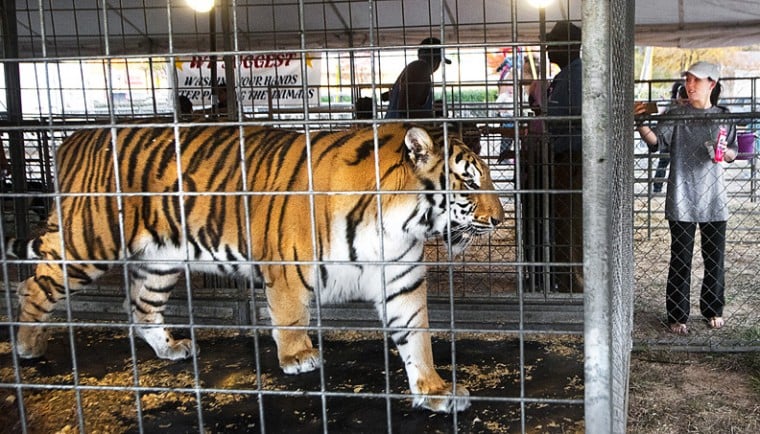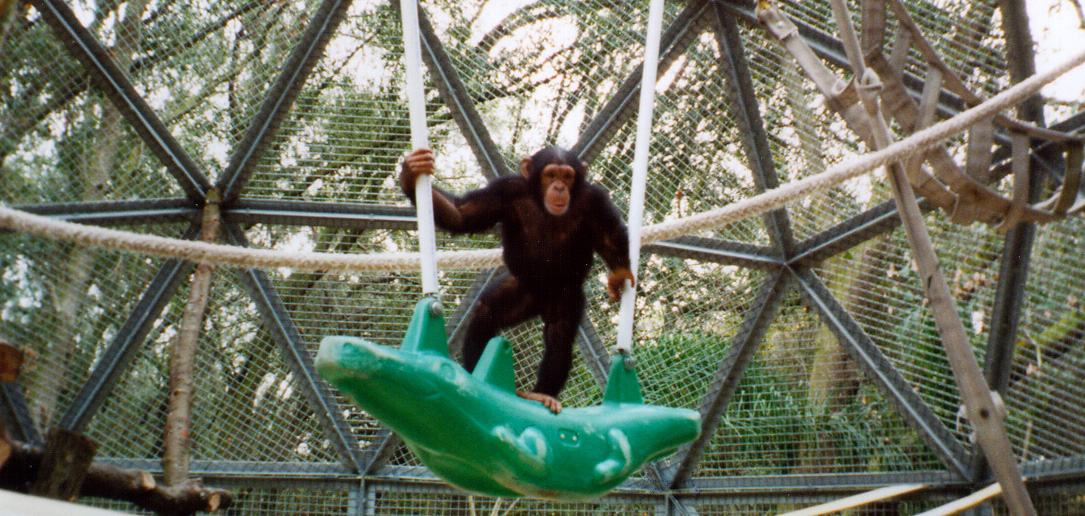The Blurred Line of what defines a Wildlife Sanctuary

Wildlife sanctuaries have garnered a lot of media attention in the recent years. Seen as the pinnacle of care in the area of captive animals, they serve as homes for animals that are old, sick, injured, crazy, or just need a home. But there is a darker side to the wildlife sanctuaries in the United States. Many are not actually sanctuaries, but private zoos or menageries that use their collections to make money and exploit animals. Sure, there are relatively good sanctuaries in the U.S., mot notably the PAWS Sanctuary, Big Cat Rescue, and Center of Great Apes. But these few "good" sanctuaries are bursting to capacity and the need for sanctuaries is ever increasing. This blog post will attempt to make clear the blurred line of what defines an animal sanctuary.

What is an animal sanctuary? Most define an animal sanctuary as a facility where animals are brought to live and protected for the rest of their lives. "True" sanctuaries do not breed, sell, buy, or trade their animals, they simply are provided the best of care for the rest of their lives. They are not open to the public and do not allow direct contact with their animals. Unfortunately, many "sanctuaries" in the United States do just that. The best example of an animal sanctuary is pictured above, the Performing Animal Welfare Society sanctuary located in San Andreas, California. The 2,300 sanctuary is home to six African elephants, three Asian elephants, tigers, African lions, bears, and other abused or performing animals.

Many so-called sanctuaries provide their visitors with the once-in-a-lifetime experience of petting and feeding baby tigers. Sounds cute, right? Your money goes to protecting wildlife and you get a photo opportunity that you can show at every family gathering. Wrong. Many of these "sanctuaries" breed baby tigers by the hundreds in order to keep up the demand, creating a huge surplus of captive tigers. But what happens when the baby tiger is no longer cute and tiny and can bite off a human head?

Unfortunately, this is the destination for many animals that are bred by the hundreds to be petted by visitors. The sanctuaries claim that they provide life-long care for their animals, but what happens when they need room for the crowd-pleasing babies? They are confined to tiny cages to be gawked at roadside menageries, gas stations, exotic animal auctions, or animal shows. True animal sanctuaries are filled to capacity with these animals.

Breeding tiger cubs is a major industry and when you consider that many private breeders extend their practices to lions, leopards, chimpanzees, orangutans, capuchin monkeys, and other exotic animals, you have a serious problem on your hand. However, it is not totally the "sanctuaries" fault that they breed animals for crowd contact. In order to stay afloat in the difficult economy, many have turned to the petting and photo opportunities that pay very well to feed their animals. It's hard to rely on donations when you have several dozen hungry mouths to feed.

Even true sanctuaries have their problems. The PAWS sanctuary, considered one of the best and brightest of animal sanctuaries have had a recent problem with tuberculosis, with two of their elephants dying in the past year alone and additional four in the past six years. Big Cat Rescue, the top big cat sanctuary has come under fire for breeding and buying cats (although they haven't done the practice in a decade). Even the Elephant Sanctuary in Tennessee is not without its critics, their co-founder was forcibly ejected from the sanctuary and filed a lawsuit against the board of directors, alleging that she was forced to delay telling a wildlife agency that one of the elephants had tested positive for tuberculosis.

The line between sanctuary and zoo continues to be blurred, as sanctuaries who allow visitors and public contact with animals insist that they are educating the public and their facilities are better than private ownership or injuries. Certainly some sanctuaries who forgo the very philosophy of sanctuaries still provide good care for their animals and are not instantly labelled as pure profiteers. The exotic animal surplus still remains and we need fully-equipped sanctuaries to deal with the issue, not sanctuaries that will feed the problem by breeding even more animals. It is time for sanctuaries to step up and help the exotic animal issue.